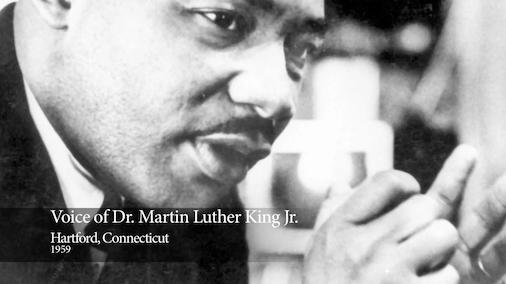

Connecting with the Legacy of Dr. Martin Luther King, Jr.
This weekend we honor the birthday and life of civil rights leader Dr. Martin Luther King, Jr. A little-known aspect of Dr. King’s life is the impact of two summers that he spent working in a tobacco field in Connecticut. That experience would influence Dr. King’s decision to become a minister and heighten his resentment of segregation. That town was Simsbury, Connecticut, my home for fifteen years before coming to Shorecrest. It was always town legend that a young MLK spent time in Simsbury. In 2010, a local history teacher worked with high school students on a research project to investigate and later document the story about how his time in Simsbury shaped Dr. King’s life.
In central Connecticut, tobacco farming along the Connecticut River Valley has a long history. Valley tobacco leaves in particular are highly prized by fine cigar makers, and are used as the cigar’s outer wrapping. Even to this day, red-roofed barns dot the landscape of central Connecticut, as shade tobacco remains in demand for cigars. In 1944, while much of their regular workforce was away at war, tobacco growers in Connecticut recruited seasonal laborers from around the country to keep their farms running, including students from Atlanta’s Morehouse College. The summer before his freshman year, Martin Luther King Jr. joined a group of his fellow students who ventured north to work in these fields. He returned three years later for another stint as a farmhand, living in a dormitory on the farm, as was common at the time.
Local Simsbury high school students wanted to delve more deeply into this history. Their research project, which included going through books and old articles, also gathered oral history from people who had interacted with Dr. King in the 1940s. One local resident, 105-year-old Bernice Martin, remembered how Dr. King went to her church in Simsbury. “He had a good voice,” Martin said. “He sang in the choir.” The students also discovered a “long lost” audiotape of a 1959 address by Dr. King at the University of Hartford in which he fondly recalled his days in Simsbury. These young historical researchers put their findings into a documentary video entitled Summers of Freedom: The Story of Martin Luther King Jr. in Connecticut which has been broadly praised and shown around the country.
The documentary “tells the story of King’s two summers in Simsbury - at the age of 15 and again at 18 - when he lived here in the dorms provided by the tobacco company and presents a compelling case that these dorms not only housed him but may have also shaped him. Until then, King was thinking of other professions such as becoming a lawyer, but after his fellow Morehouse College students at the tobacco farm elected him their religious leader, he decided to become a minister. That leadership role had a profound effect. On his seminary application, King said that’s when he decided he wanted to be a minister. But what seems to have affected him even more was Simsbury itself.”
“Martin Luther King Jr. could hardly believe his eyes when he left the segregated South as a teenage college student to work on a tobacco farm in Simsbury, Connecticut. He wrote to his father in June 1944, ‘On our way here we saw some things I had never anticipated to see. After we passed Washington there was no discrimination at all. The white people here are very nice. We go to any place we want to and sit anywhere we want to.’” He attended Simsbury churches, sang with the choir, enjoyed drugstore milkshakes (where he was surprised to sit wherever he wanted), and attended movies at the local Town Hall.
In other letters written home Dr. King said, “Negros and whites go to the same church.” About restaurants he wrote, “I never thought that a person of my race could eat anywhere.” Most telling, he wrote about going home, “It was a bitter feeling going back to segregation. It was hard to understand why I could ride wherever I pleased on the train from New York to Washington and then had to change to a Jim Crow car at the nation’s capital.”
Clearly, Dr. King’s time in Simsbury was significant, as it was his first experience outside the racially segregated South and it seemed to have a profound effect on his outlook. What I also find compelling is that this story about Dr. King’s teenage summers was explored and amplified by teenagers themselves. The beauty is that these high school students felt a connection to the civil rights leader and their hometown, and wanted to document the bonds that they discovered. This is education and history in action. Our students at Shorecrest engage in similar experiences, such as Lower School social studies investigations, National History Day projects in Middle and Upper School, and student-created independent study courses in Upper School.
Looking ahead to next weekend, I invite you to join me and other members of the school community in celebrating the birthday of Dr. Martin Luther King, Jr. Our plan is to gather at the MLK Dream Big Parade on Monday, January 17, to support members of the greater St. Petersburg community as they march to honor Dr. King’s life and legacy. In recognition of Dr. King’s commitment to service, Shorecrest Chargers will participate in the clean-up efforts at the conclusion of the parade. If you would like to watch the parade together or be a part of the clean-up event, please meet at 10am at Pioneer Park at the corner of Central Avenue and Beach Drive downtown wearing Shorecrest gear. For more information, please contact Mr. Roderick Fludd at [email protected].
I hope to see you there!
All the best,
Nancy
























